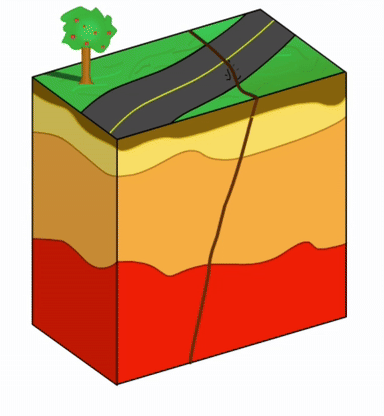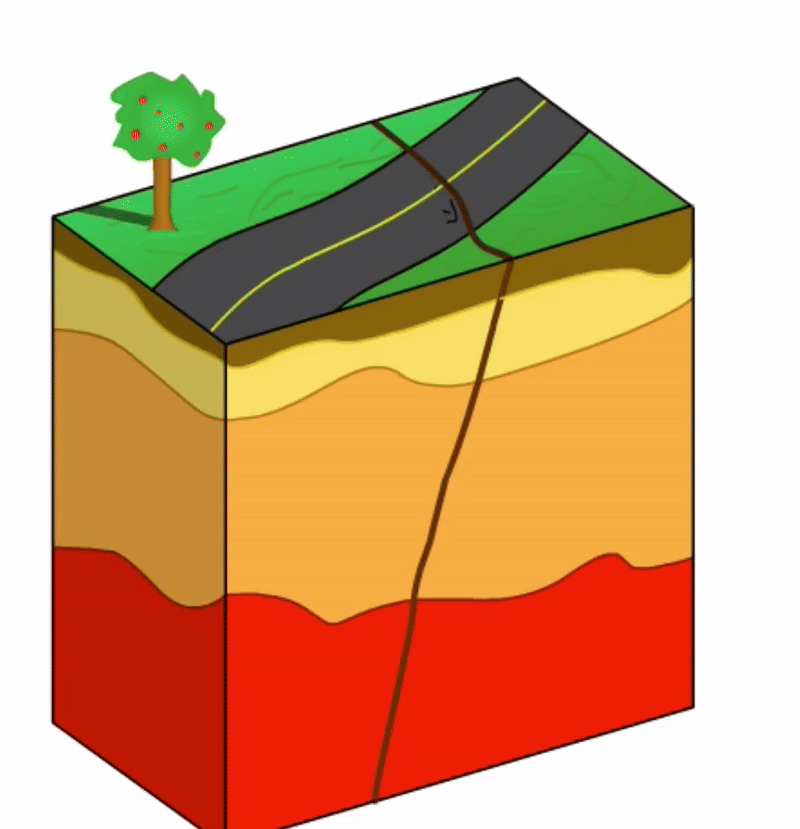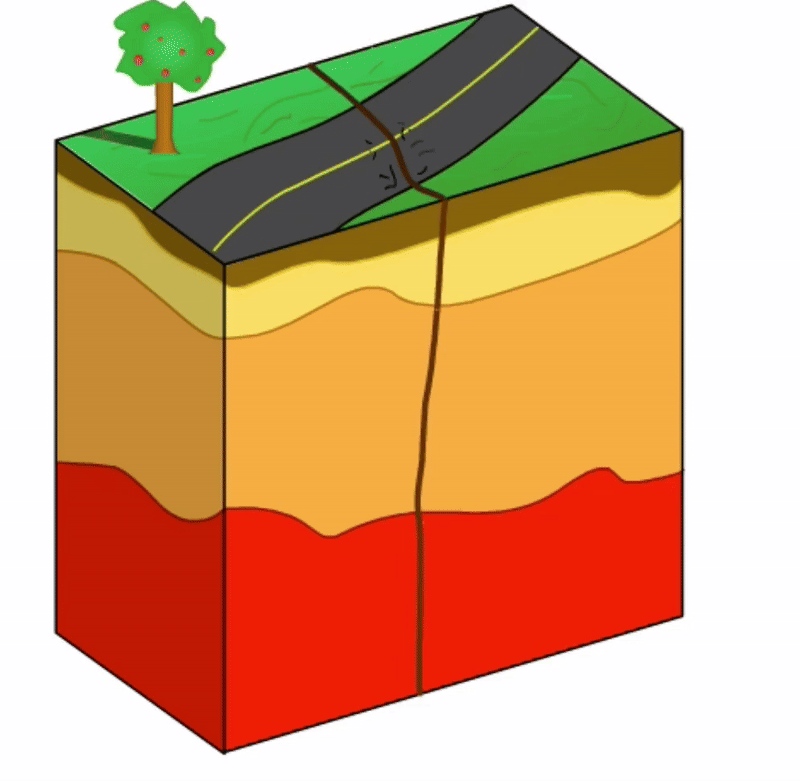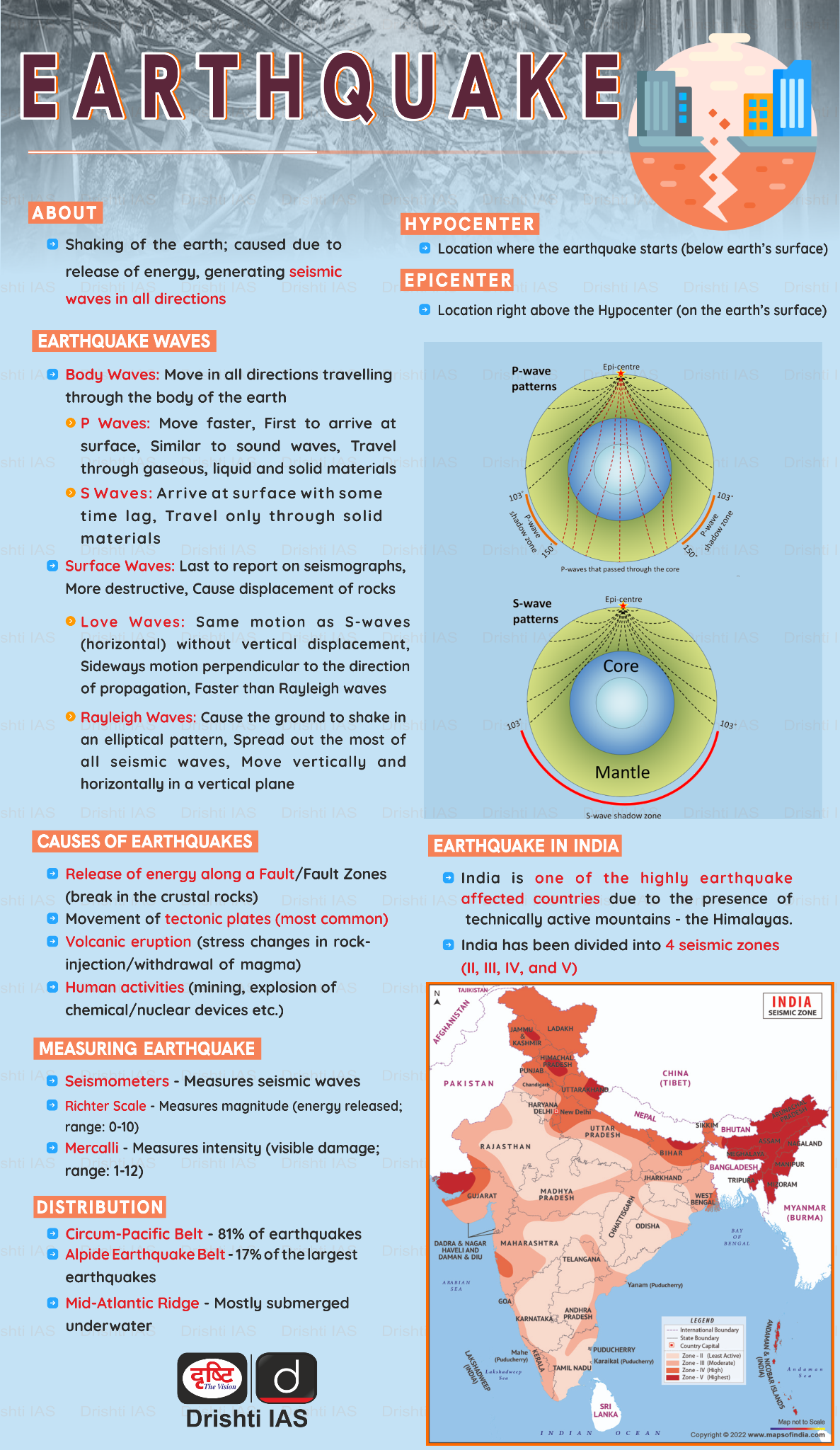Myanmar Earthquake | 02 Apr 2025
Why in News?
A massive 7.7 magnitude earthquake struck central Myanmar, causing widespread destruction, particularly in the city of Mandalay. This seismic event is one of the most powerful earthquakes in recent years.
What Caused the Myanmar Earthquake?
- Strike-Slip Faulting: The Myanmar earthquake was caused by a type of faulting known as "strike-slip faulting" along the Sagaing fault.
- The Sagaing Fault, spanning 1,500 km through Myanmar, marks the tectonic plate boundary between the Indian plate to the west and the Eurasian plate to the east. It is one of the world’s longest and most active strike-slip faults.
- Plate Interaction: The earthquake occurred due to the movement between the Indian and Eurasian tectonic plates, with the Indian plate moving northward in relation to the Eurasian plate.
- This interaction causes stress to accumulate along the fault line, specifically the Sagaing Fault. When the built-up strain is suddenly released, it triggers an earthquake.
Note: In response to the Myanmar earthquake, India launched Operation Brahma to provide humanitarian assistance and disaster relief (HADR), reaffirming its role as the 'First Responder' in the region.
- Indian Navy ships Satpura, Savitri, Karmuk (an indigenously built Missile Corvette), and Landing Craft Utility (LCU) 52 (it is the 2nd LCU Mk-IV class), carrying essential relief material, sailed to Yangon, Myanmar.
What is a Fault?
- Definition: A fault is a fracture or zone of fractures in the Earth's crust between two blocks of rock, allowing them to move relative to each other.
- Earth scientists classify faults based on their dip (the angle of the fault with respect to the surface) and the direction of the movement (slip) along the fault.
- This movement is caused by tectonic stress, which can be sudden, resulting in an earthquake, or slow, occurring as creep.
- Tectonic stress builds up along fault lines and, when released, causes the blocks to shift, leading to seismic activity.
- Types of Fault:
- Normal Fault: A normal fault is a dip-slip fault where the block above the fault moves downward relative to the block below.

- Reverse Fault: A reverse (thrust) fault is a dip-slip fault where the upper block moves up and over the lower block. This type of faulting occurs in compression zones, such as where one tectonic plate is being subducted under another, like in Japan.

- Strike-slip Fault: Occur when the blocks slide past each other horizontally.
- Normal Fault: A normal fault is a dip-slip fault where the block above the fault moves downward relative to the block below.
UPSC Civil Services Examination, Previous Year Questions
Prelims:
Q. Consider the following: (2013)
- Electromagnetic radiation
- Geothermal energy
- Gravitational force
- Plate movements
- Rotation of the earth
- Revolution of the earth
Which of the above are responsible for bringing dynamic changes on the surface of the earth?
(a) 1, 2, 3 and 4 only
(b) 1, 3, 5 and 6 only
(c) 2, 4, 5 and 6 only
(d) 1, 2, 3, 4, 5 and 6
Ans: (d)
Mains
Q. The frequency of earthquakes appears to have increased in the Indian subcontinent. However, India’s preparedness for mitigating their impact has significant gaps. Discuss various aspects. (2015)
Q. Discuss about the vulnerability of India to earthquake related hazards. Give examples including the salient features of major disasters caused by earthquakes in different parts of India during the last three decades. (2021)


